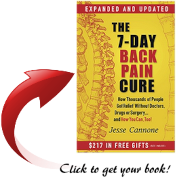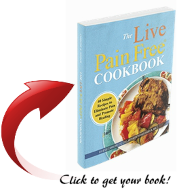Last week, we discussed about what fascia is, and that it is a complex network of connective tissue that runs throughout our body, surrounding and intertwining with muscles, bones, nerves, and organs. It provides support and structure, allowing tissues to slide and move smoothly against each other within our body. And yes, here is my usual song and dance … I am not a medical professional and what follows is not medical advice. I would like to offer information that you can run with and do your own deep dive regarding the relationship of fascia and pain relief.

Image by pvproductions on Freepik
Recent research has highlighted the potential role of fascia in pain perception and relief.
Role of Fascia in Pain:
- Sensory Function: Fascia contains many sensory nerve endings called mechanoreceptors and nociceptors. Mechanoreceptors respond to mechanical stimulation, transmitting information about movement and pressure, while nociceptors detect potentially damaging stimuli and signal pain sensations. Changes or disruptions in the fascia may affect these receptors, contributing to pain perception.
- Fascial Restrictions: Limitations or tightening within the fascia, often due to injury, inflammation, repetitive movements, or poor posture, can lead to tension and pain. This can create areas of restricted movement and increased pressure on nerves, resulting in localized or referred pain.
- Myofascial Pain Syndrome: Myofascial pain syndrome involves the development of trigger points within muscles or fascial tissues. These trigger points can cause referred pain, muscle stiffness, and reduced range of motion. Treatment often involves techniques to release these trigger points and reduce pain.
Fascia and Pain Relief:
- Manual Therapies: Various manual therapies, such as myofascial release, massage, and techniques like foam rolling, aim to stretch and manipulate the fascia to reduce tension, release tightness, and alleviate pain. These methods can help improve tissue flexibility and circulation, potentially reducing pain and discomfort.
- Exercise and Movement: Engaging in exercises that target the fascia, such as yoga, Pilates, and specific stretching routines, may help maintain or restore fascial flexibility and reduce pain linked to restricted movement or muscle tightness.
- Fascial Manipulation Techniques: Some specialized therapeutic approaches focus on manipulating the fascia directly to release tension and improve movement. Experts use methods to target particular tight areas in the fascia, aiming to lessen pain and enhance how the body works.
- Regenerative Therapies: Certain regenerative medical techniques, such as prolotherapy or platelet-rich plasma (PRP) injections, may also target tight areas in the fascia or injuries to promote healing and reduce associated pain.

Understanding the relationship between fascia and pain relief is an evolving area of study in the field of pain management. Combining approaches that deal with fascial health alongside traditional pain management strategies may offer overall relief for individuals experiencing muscle-bone discomfort or chronic pain related to fascial issues. Consulting with healthcare professionals, physical therapists, or specialists trained in fascial manipulation can help develop personalized approaches for managing fascia-related pain.
To Your Success & Freedom,
Glenn Shimabukuro



